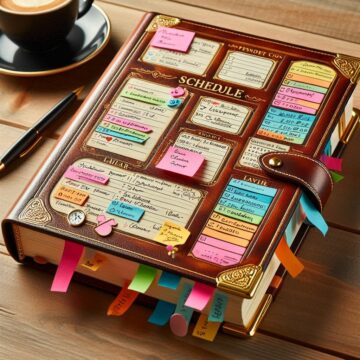
.
I notice that people often panic when they accidentally put the wrong fuel in their car—like diesel instead of petrol—because they know it can damage the engine.
Yet, our supermarkets are full of foods that act like the wrong fuel for our bodies. Although our digestive engine also sputters, unlike a car, the body adapts and the consequences become visible later. How does that work?
The Body as a Garbage Dump
All the indigestible fuel that we consume, looks for a place to go in the body. But where is the rubbish dump?
...Like sludge in a ditch, this “indigestible fuel” thickens our internal fluids, such as blood, lymphatic fluid, and tissue fluids, disrupting their natural flow.
A clear example is seen in children with dairy intolerance: their bodies struggle to process dairy, and the normally clear nasal fluids turn into thick, green mucus. This visible change is just one way the body signals that something isn’t right.
Thickening of Bodily Fluids
The thickening of bodily fluids can occur in many forms, levels, and locations throughout the body. It can, for example, thicken, buildup and, manifest in various ways, including:
• Mucus (nasal congestion)
• Eczema (linked to impaired skin circulation)
• Asthma or blocked sinuses
• Vaginal discharge
• Elevated cholesterol
• Arteriosclerosis (hardening of the arteries)
• Edema (fluid retention in tissues)
• Fat accumulation
• Gallstones
• Kidney stones
• Cancer
Where bodily fluids become so thickened that there is reduced flow and stagnation, low-grade inflammation can occur. You can compare it to the stinking sludge from a stagnant ditch.
You can read more about low-grade inflammation and the role of nutritionhere
When stagnation becomes severe, it can create isolated, energy-consuming systems that no longer communicate with the rest of the body—similar to how a clogged ditch becomes cut off from surrounding water.
This loss of regulation is one way to understand the development of cancerous growths.
The formation of fat can protect your body against toxins. Toxic substances are encapsulated by fat. That is why you gain weight from consuming foods with various added preservatives, colours, and flavours.
What Is Healthy Nutrition?
That’s the big question—and the honest answer is – it depends. What’s healthy for one person may not be ideal for another.
Digestion is a rotting and ripening process during which your digestion is assisted by about a kilo of gut bacteria. You can only digest what the gut bacteria recognize as food.
Many processed foods contain preservatives. Preservatives are substances that specifically prevent decay and ripening and thus hinder digestion as well. In addition to preservatives, colourants and flavourings are indigestible, and sugars are also bad for everyone’s digestion.
So, when you eliminate sugar and eat a varied and unprocessed diet (not from a package), you’ve already made a big step in the right direction!
Good nutrition is food that can be digested well, and we are very different in this as humans: some people digest fats very well, others fare better on proteins or carbohydrates, or combinations of these.
Therefore, it’s always good to check with yourself:
‘How does this settle in my stomach?’
Does it feel like a stone in your stomach, do you then suffer from gas or heartburn, or does the food leave you feeling nourished and energized?
And how long does that energy last? Do you feel satisfied for hours, or are you hungry again soon after?
Sometimes I get clients who eat very healthily and still have digestive problems. In such cases, it’s worth exploring deeper causes, such as food intolerances or allergies.
Body Fluid Flow
“Sludge” in the body can be caused by indigestible food, but the flow of body fluids also plays a role. Compare it to sludge that has less chance of sabotaging a well-draining ditch.
Exercise is, of course, an important factor for fluid flow. The more you exercise, the better the flow of your body fluids.
And don’t underestimate stress! Stress causes the body to contract, which reduces fluid flow and increases the likelihood of sludge buildup.
Furthermore, stress causes you to be constantly “on” and excessively in the fight-or-flight mode of your autonomic nervous system. This is detrimental to the resting state of the autonomic nervous system, which also includes your digestion. Therefore, your digestion can function less effectively under the influence of stress.
Chronic stress is a major stagnating factor that contributes to illness.
The reward of good nutrition:
In one form of acupuncture I practice, the effects of nutrition can be felt directly in the abdomen. I once treated someone who consistently experienced a sharp, stabbing pain deep in the abdominal area during several consultations. Despite treatment, the discomfort persisted. I shared my concern about a possible rumbling appendix. The client returned a few weeks later. The pain had disappeared like snow in the sun, and she had more energy. I asked her if she had changed her diet, and it turned out she no longer ate sugar. It was very motivating for her to notice the significant effect this had had so quickly.
Nutrition is therefore an important factor for your health, and when treatment is combined with an improved diet, the results for your health will be better and longer lasting.

